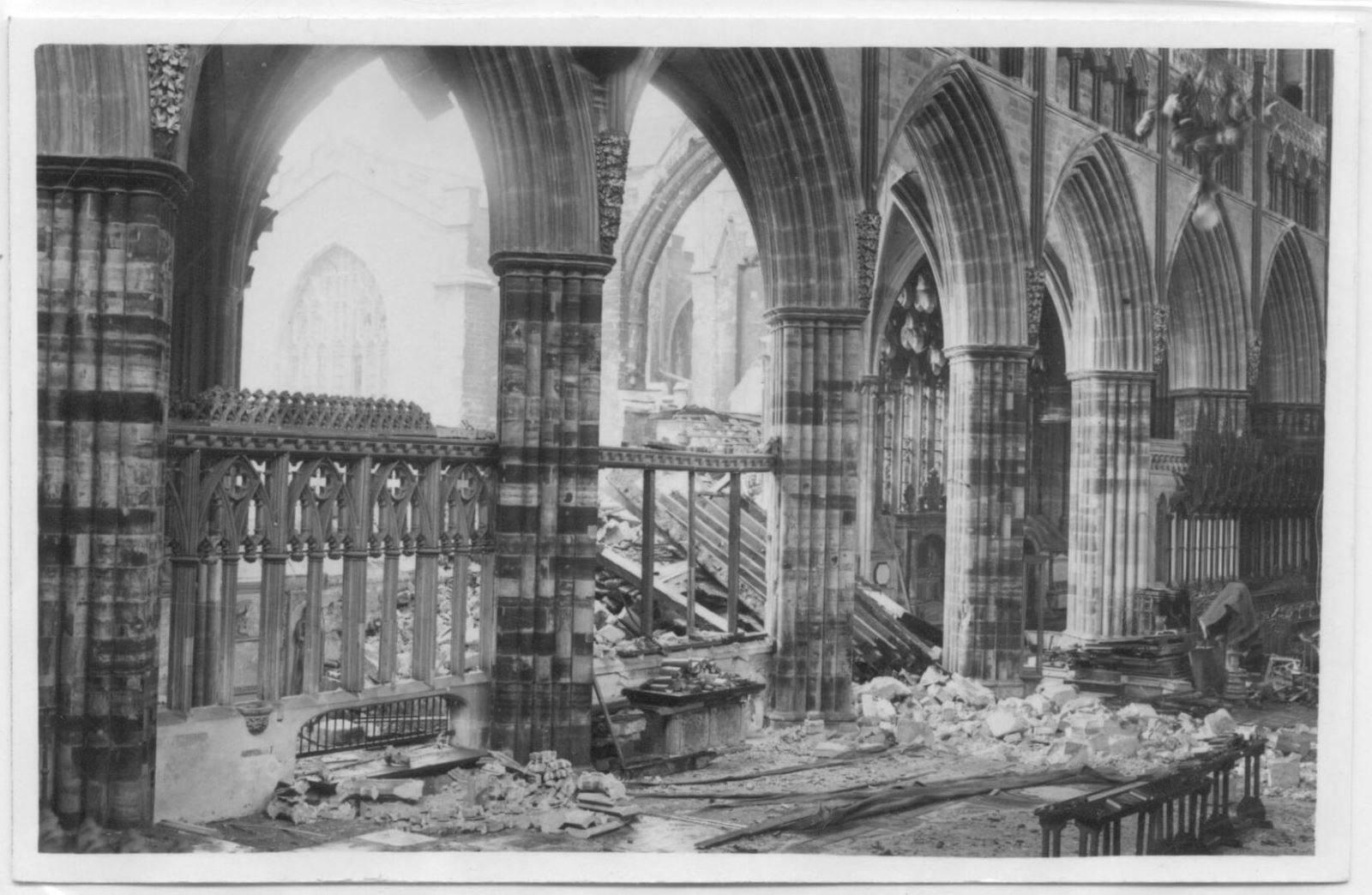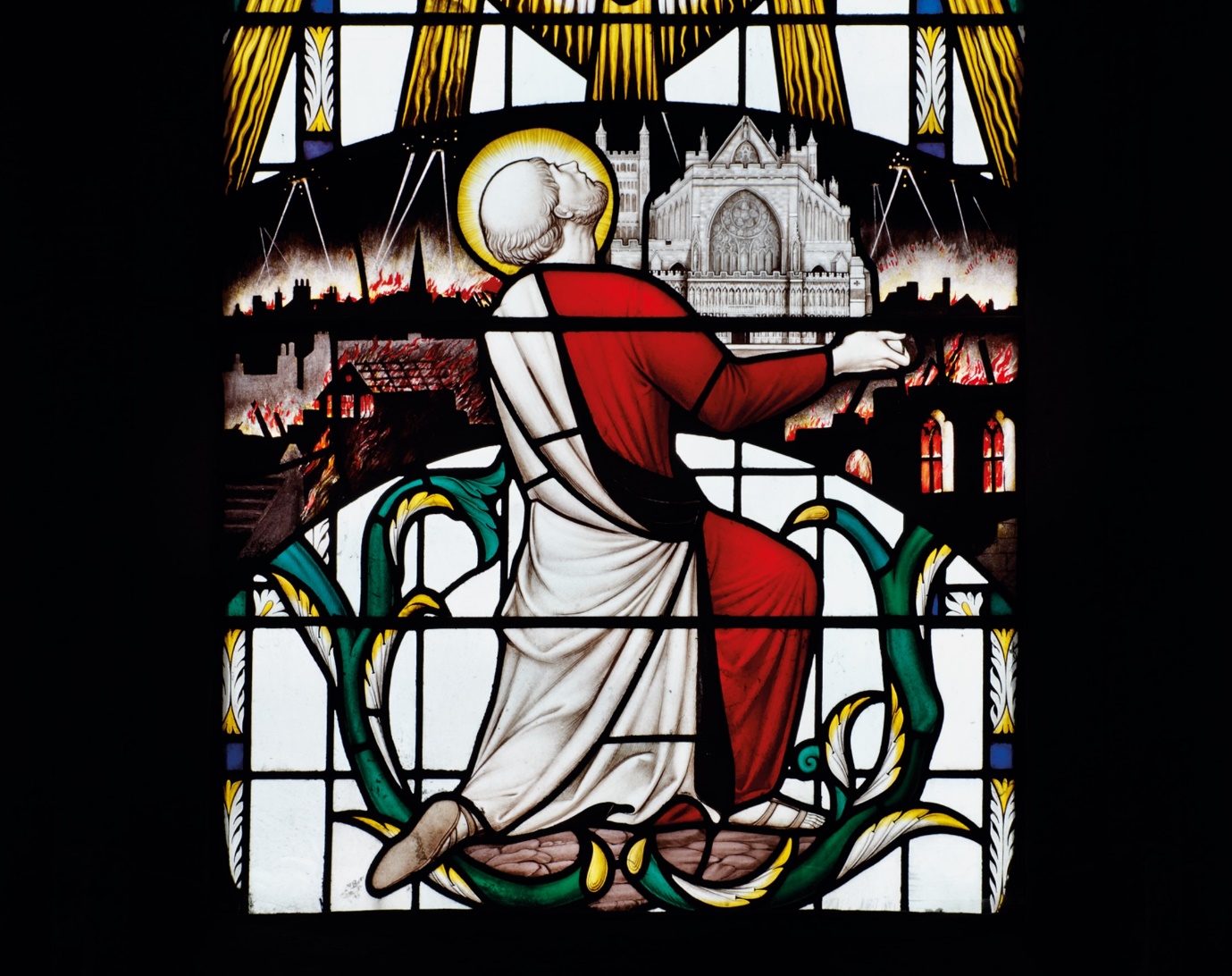Exeter Cathedral is the setting for a carol concert you won’t want to miss this Christmas.
Over two evenings in December, professional solo soprano Milly Forrest and trumpeters Cameron Todd and Fraser Tannock will add extra sparkle to the superb sound of the 100-strong Exeter Philharmonic Choir. The audience will also have the opportunity to join in with a few popular Christmas carols. Well-known local historian Todd Gray will be compering the concerts on Tuesday 17th and Wednesday 18th December, adding a historical note to the festive proceedings with anecdotes about Devon Christmases of the past.
.jpeg)
Photo - Exeter Philharmonic Choir promo for Xmas carol concerts with compere Todd Gray (photo by Martin Stubbings).
History runs through the veins of Exeter Philharmonic Choir. It’s one of the oldest amateur choral societies in the UK, although it’s had several names since its foundation early in the reign of Queen Victoria, On 22 October 1846, twenty-two Cathedral singers and local musicians gathered in the city to set the wheels in motion for the Exeter Oratorio Society (EOS). Composed of both singers and instrumentalists, the new society began to prepare for its premiere – a performance of Handel’s much-loved Messiah. The Choir’s first concert took place in 1847 at the Royal Subscription Rooms on Exeter’s now vanished London Inn Square. Since then, the Choir has given concerts in Exeter every year without interruption, despite world wars and pandemics, always performing with professional orchestras and soloists to maintain the high quality of its music-making.
The Exeter Oratorio Society successfully navigated its first fifty years and became an established part of musical life in Exeter. When Queen Victoria died in 1901 after a long reign, and her eldest son “Bertie” succeeded to the throne as Edward VI, Exeter’s ‘musical societies’ played their part in the nationwide celebration of his coronation. In 1907, the ESO merged with the Western Counties Musical Association, appointing joint conductors for some years.
Then came the Great War. Amid patriotic fervour, reservists and territorials were mobilised and many answered Field Marshal Kitchener’s appeal to join new volunteer forces to bolster Britain’s small professional army. The Exeter Oratorio Society selected Elgar’s The Dream of Gerontius as the highlight of its 1914 festival but “having regard to the War, they were reluctantly compelled to postpone its performance”. Nevertheless, EOS’s concerts continued throughout the hostilities, although it was reported that the ranks of male voices became somewhat depleted!
After Exeter’s Victoria Hall, the society’s usual concert venue, was destroyed by fire along with its fine Willis organ, the EOS was left without a venue for its 1919 concert. With two weeks to go, the Dean and Chapter of Exeter Cathedral gave permission for the use of the Cathedral as a performance venue. In 1930, the EOS merged again, this time with the Cathedral Augmented Choir to form the Exeter Musical Society (EMS). The connection between the Cathedral and the Society would strengthen over time, particularly through the turbulence of WWII.

Photo - interio damage to Exeter Cathedral in 1942 (courtesy of Exeter Cathedral).
On 4 May 1942, twenty German bombers arrived over the largely undefended city and bombarded it relentlessly for over an hour. Much of the city centre was devastated. The fires burnt for days. 156 people were killed and 583 injured in what was called The Exeter Blitz. No. 8 Bedford Circus, the home of the Secretary of the Exeter Musical Society, was not spared and nearly all the Society’s records were lost. In June, EMS held an informal meeting at St Petrock’s Church “to test the feeling of the members, regarding the resumption of rehearsals, owing to the devastated condition of the City”.
The future was uncertain. Apart from the May blitz, there had been other air raids and Hitler had promised that his Luftwaffe would return “to finish the job”. There were also many practical problems. The Cathedral, for the foreseeable future, could not be used for performances, nor could rehearsals be held in the Chapter House, which had also been damaged. The Cathedral organ had been put out of action and, coincidentally, all EMS’s music stands had been lost. Nevertheless, the minutes of the meeting recorded that rehearsals would resume in two weeks, on 24 June 1942 at the usual time, at St Petrock’s Church. With optimism overflowing, the meeting expressed the hope “that the Cathedral would be ready for an early autumn performance of The Messiah”, under the baton of Dr Alfred Wilcock, the Society’s conductor.
.jpg)
Photo - Memorial to Alfred William Wilcock (1887 - 1953), Exeter Cathedral. Image courtesy of Andrew Abbott, 5 June 2011.
When the EMS Committee met in October, it was agreed that the concert would instead take place on the afternoon of Saturday 28 November at the Mint Methodist Church, by kind permission of the Minister, Revd. Whitehead. Since this was to be a choral rendition of Messiah without the orchestra, arrangements were also made to use the Mint’s organ.
By the start of 1943, planning had begun for the EMS’s next concert, to be held in April. The Chapter House had been repaired and was now available for rehearsals. Dr Wilcock proposed Haydn’s Creation as a suitable work, adding that “something more prodigious would have to be left until after the war”. This suggestion was met with general approval, showing “that the Society was alive in spite of war and depression”. This sentiment is captured by Dr Wilcock’s memorial in Exeter Cathedral, where he was the organist from 1933 until 1952. The simple epitaph reads: “In peace and through war he made melody.”
Fast forward to the 1980s when it was discovered that the Choir’s origins dated not from 1930, as had previously been thought (remember most of the records had been lost in the Blitz), but from as far back as 1846! In anticipation of the forthcoming 150th anniversary year, 1995-1996, it was agreed that the Choir’s name should change from ‘Exeter Musical Society’ to ’Exeter Philharmonic Choir’. And given what was now known to be its historical importance, it seemed entirely appropriate to invite the (Lord) Mayor of Exeter to be the Honorary President. The Committee also decided to ask a significant figure in this country’s musical life to be EPC’s first Honorary Patron, and Sir Neville Marriner accepted. The rest, you might say, is history!

Photo - The Blitz Window at Exeter Cathedral (image courtesy of Exeter Cathedral).
In recent decades, EPC has gone from strength to strength. While local audiences are treated to three major concerts a year and two evenings of Christmas carols in Exeter Cathedral, the Choir also performs further afield, mostly recently touring in Spain. Last season was a sell-out and Exeter Philharmonic’s Choir’s Christmas concerts are always popular, so book early to ensure your place!
Carols in the Cathedral
Tuesday 17th and Wednesday 18th December
Doors open 6:45 pm. Concert from 7:30 pm to 9:15 pm.
Tickets £12.00 - £22.00 available from exeterphilharmonic.org.uk
Donations received at this year’s carol concerts will support local charity CEDA (Community, Equality, Disability Action), which empowers disabled people so that they are connected, happy and seen.
Thanks to Choir member Stuart Mole for his research into EPC’s history.
Related
Comments
Comments are disabled for this post.



 to add an item to your Itinerary basket.
to add an item to your Itinerary basket.





